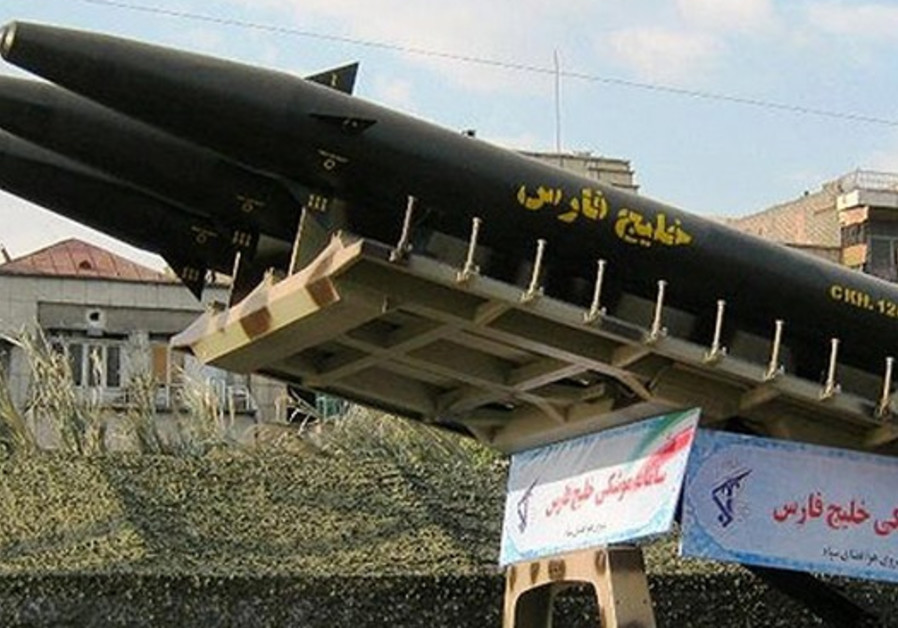Syrian opposition documents Iranian missile caches in country – report

Iran displays its arsenal of missiles. (photo credit: Courtesy)
Syrian opposition officers have documented the site of several Iranian missile caches in the country, including in areas Israel has demanded that Iran vacate.
According to a report in the London-based Asharq Al-Awsat, the National Liberation Front, which is made up of 150 dissident officers, documented the presence of Iranian Fateh-110 and Zulfiqar short-range ballistic missiles and Russian-made Scud missiles.
The group also found that Toophan-1 anti-tank missiles are being stored in the strategic T-4 airport in Syria’s Homs province with other rocket caches in Jubb el-Jarah east of Homs, in Aleppo’s al-Safira, and south of Damascus.
In the early 1990s, Iran began developing the Fateh-110, a mobile short range ballistic missile reportedly capable of carrying nuclear or biological warheads, and has since developed five variants with various ranges and payloads.
The Fateh-110/I can carry a 650 kg. payload to a maximum range of 200 km., the Fateh-110/II has a range of 250 km. and a payload of 450 kg., and the Fateh-110/II has a range of 300 km. and a payload of 650 kg., as does the Fateh-110/IV allegedly along with a guidance system and precision targeting. Last year, Tehran announced another version of the Fateh, called the Al-Mobeen or “The Divine Conquest” with a range of 300-500 km.
The Zulfiqar is a variant of the Fateh-110 and has a reported range of 750 km. and possesses a cluster-munition warhead. According to Iranian media, the missile has an accuracy of within 10 meters.
According to the report, Iran’s Revolutionary Guard Corps has also moved its leadership from Damascus to the mountains north of the capital because of repeated strikes by Israel.
Israel has warned repeatedly that it would not allow for an Iranian presence in Syria and has admitted to hundreds of air strikes to prevent the transfer of weapons, ranging from ammunition to surface-to-air missile kits, to Hezbollah in Lebanon and the entrenchment of its forces on the Golan.
It is estimated that Hezbollah has some 30,000 rockets with a range of 10 kilometers, another 40,000 with a range of 40 kilometers, some 200 rockets with a range of 300 kilometers, and only about 10 rockets with a range of up to 500 kilometers.
Israel is concerned that Iran is not only trying to consolidate its grip in Syria where it could establish a forward base to attack Israel, but that it is trying to build advanced weapons factories in Syria and Lebanon in order to manufacture GPS-guided missiles that could hit targets with greater accuracy.
Iran has been moving its assets from areas repeatedly struck by Israel to locations closer to the border with Iraq, specifically the T-4 air base strategically located between Homs and Palmyra.
The air base has been attacked repeatedly by alleged Israeli air strikes, most recently last week when an advanced weapons system was destroyed just days after two rockets were launched towards Israel’s Hermon ski resort.
Now is the time to join the news event of the year – The Jerusalem Post Annual Conference!
For more information and to sign up, click here>>







Comments are closed.